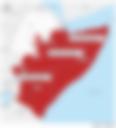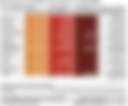
East Africa Regional Desert Locust Impact Monitoring Report: Round 3
Since June 2020, the Food Security and Nutrition Working Group (FSNWG) had been conducting periodic regional Desert Locust impact assessments among agricultural respondents across Desert Locust (DL) - affected areas of Ethiopia, Kenya, Somalia and Uganda. Assessment findings were disseminated widely to inform policy and programming decision-making, particularly around response and preparedness.
DL monitoring report - Round 1
DL monitoring report - Round 2
FSNWG is pleased to share with you findings from the Round 3 DL impact assessment that was conducted in April/May/June 2021.
Key Messages
- The assessment found that one fifth of cropping households and roughly one in four livestock rearing households living in Desert Locust affected administrative units experienced Desert Locust-related pasture and crop losses.
- For impacted households, Desert Locust-related losses were often quite large. More specifically, slightly over half of impacted cropping and livestock-rearing respondents experienced high or very high losses to either their crops and/or rangeland where their animals graze.
- Considering only those areas included in all three rounds of data collection (round 1 conducted in June/July 2020, round 2 conducted in October/November/December 2020, and round 3 conducted in April/May/June 2021), significant declines in the percentage of respondents observing Desert Locusts and related losses have been observed. These declines are likely due to successful control operations and less favorable conditions as rainfall between March and May 2021 was below average across much of the region.
- Beyond direct crop and rangeland impacts, Desert Locust affected respondents also commonly indicated that Desert Locusts were driving increased food insecurity/malnutrition, concerns relating to animal health, environmental impacts, emotional stress/anxiety, and concerns relating to human health.
- Overall, cropping respondents (both those affected by Desert Locusts and those who were not) were relatively positive about their expectations for the upcoming harvests. Livestock-rearing respondents, meanwhile, were split on the state of current pasture availability, depending on where they were located in the region. In areas where the highest percentage of respondents reported poor pasture availability and/or that harvests would be below average, below-average rains were identified as a key driver of current conditions. Desert locusts were identified to be a key driver only in a few areas.
- Food insecurity amongst the interviewed agricultural respondents was found to be high with more than 20 percent of respondents in most of the assessed areas reporting a reduced Coping Strategies Index (rCSI) exceeding 18, the threshold for Crisis (IPC Phase 3) or worse. The highest prevalence of food insecurity was observed in Afdar and Nogob in Ethiopia, and Bari and Sool in Somalia. Additionally, major deteriorations in food insecurity amongst agricultural households were found between round 2 (conducted in October/November/December) and round 3 (conducted in April/May/June) in Isiolo, Kenya and Bari, Sanaag, and Sool in Somalia.



